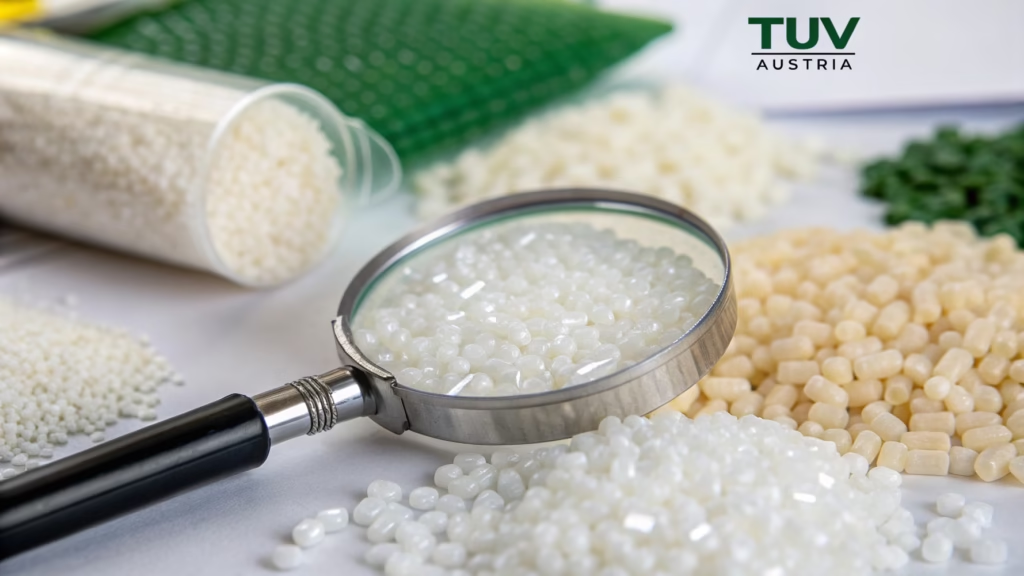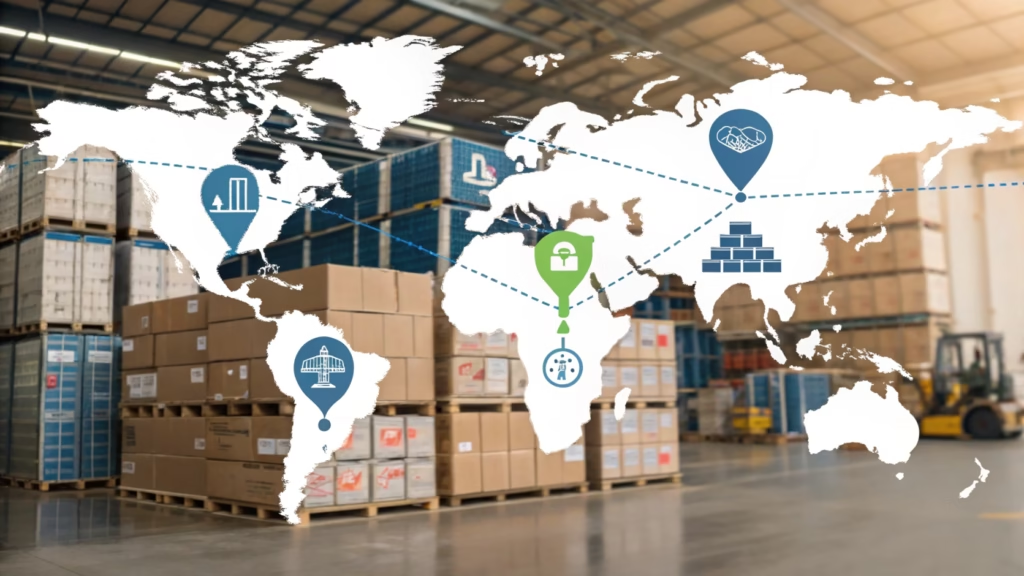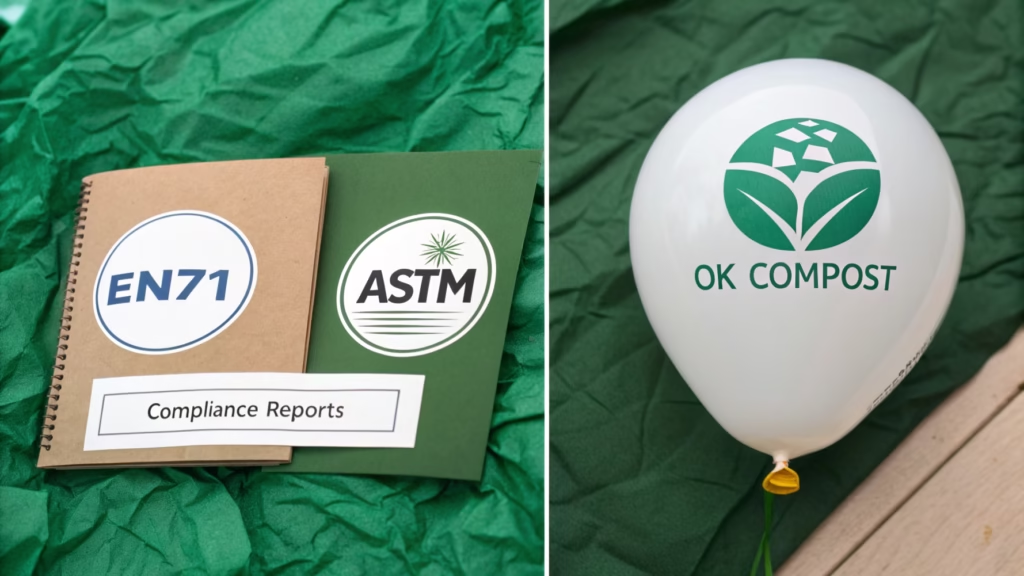Are eco-friendly balloons a viable option for large events?
Large events often use many balloons, which can create a lot of waste. This makes people worry about the environment. But do eco-friendly balloons really help?
Yes, eco-friendly balloons are a good choice for large events. They help reduce waste1 and show a commitment to sustainability2. Many options exist that meet both budget and environmental standards3.

Many businesses want to be more sustainable. They wonder if eco-friendly balloons can work for big parties, marketing campaigns, or corporate gatherings. We need to look at costs, materials, and rules to decide.
How do wholesale prices4 for biodegradable balloons5 compare to traditional latex?
Buying balloons in bulk means looking at the cost. People often think eco-friendly options are more expensive. But is this always true for biodegradable balloons5?
Wholesale prices for biodegradable balloons5 are becoming more competitive with traditional latex. Initial costs might be slightly higher for some new materials, but the difference is often small when buying in large quantities.
[^5]](https://aihuaballoon.com/wp-content/uploads/2025/09/wholesale-prices-for-biodegradable-balloons-a-pr-1024x576.avif)
When I first started in this industry, traditional latex balloons were much cheaper. People did not care much about eco-friendly options. Now, things are changing. As more companies make biodegradable balloons5, the prices are falling. My team at AIHUA BALLOON has seen this trend. We work with suppliers to get the best prices. It helps our customers, like Sarah Chen from GlobalMart, manage their budgets. She wants good quality at a fair price. We provide options that balance cost and environmental impact. Often, the long-term benefits of using eco-friendly products, like better brand image, can outweigh a small price difference.
| Type of Balloon | Average Wholesale Price (per 1000) | Main Material | Environmental Impact |
|---|---|---|---|
| Traditional Latex | $30 - $50 | Natural Rubber | Biodegradable (slow) |
| Certified Biodegradable Latex | $40 - $70 | Natural Rubber | Faster Biodegradation |
| PLA Balloons | $70 - $100 | Polylactic Acid | Commercially Compostable |
What materials are used in certified eco-friendly balloons and what is their float time6?
When we talk about "eco-friendly," what does that actually mean for balloons? What are they made of? And importantly, how long do they stay afloat for an event?
Certified eco-friendly balloons are mainly made from natural latex, often with added compounds to speed up biodegradation. Some are also made from plant-based plastics. Their float time6 is similar to traditional balloons, usually 8-24 hours depending on size and helium quality.

At AIHUA BALLOON, we focus on safe and sustainable materials. Most of our eco-friendly balloons are made from natural rubber latex7. This material comes from rubber trees. It is a renewable resource. The latex breaks down in nature, just like a leaf. Some manufacturers add special things to the latex to make it break down even faster. This is important for reducing waste. We also see new materials like Polylactic Acid (PLA)8. PLA comes from corn starch or sugarcane. It needs industrial composting9 to break down, which is good but needs specific facilities. For float time6, most eco-friendly latex balloons perform just like regular ones. A 12-inch balloon filled with good helium stays up for 12-18 hours. This is enough for most big events, from morning setup to evening cleanup. We always test our balloons to make sure they meet these standards.
| Material Type | Source | Biodegradation Process | Typical Float Time (12-inch) |
|---|---|---|---|
| Natural Latex (enhanced) | Rubber Tree Sap | Natural microbial decomposition | 12-18 hours |
| Polylactic Acid (PLA)8 | Corn starch, Sugarcane | Industrial composting | 8-12 hours |
| Recycled PET (limited use) | Recycled plastic bottles | Not biodegradable (can be recycled if collected) | Longer (days to weeks) |
Who are the leading global suppliers10 for importing bulk quantities of sustainable balloons?
Finding a good supplier is key for businesses like GlobalMart. They need bulk quantities of sustainable balloons. But who are the best global suppliers10 for this?
Leading global suppliers10 for importing bulk sustainable balloons include large manufacturers in Asia and Europe. Companies with strong certifications and long histories in the balloon industry, like AIHUA BALLOON, are often the best choice for quality and reliability.

As Vice General Manager at AIHUA BALLOON, I know the global market well. We have been in this business for over 37 years. We focus on quality and international safety rules11. This helps us ensure our products are top-notch. For someone like Sarah Chen, who manages procurement for many stores, knowing the supplier’s track record is vital. She needs reliable delivery and consistent product quality. We work closely with our partners to ensure they meet tough standards. We also make sure our own processes are transparent. This builds trust. We believe in strong partnerships, not just selling products. Our goal is to make sure our customers get what they need, on time and to the right standard. This means working with factories that use sustainable practices12 and have the right certifications.
| Supplier Region | Key Strengths | Certifications to Look For |
|---|---|---|
| Asia | Cost-effective, large-scale production, diverse product range | ISO 9001, Sedex, BSCI |
| Europe | High quality, strong design focus, good for specialized products | EN71, REACH, TÜV |
| North America | Innovation, quick turnaround for local markets | ASTM, CPSIA |
Are there specific regulations or certifications buyers should look for when sourcing eco-friendly balloons?
Buying eco-friendly products means more than just a label says "green." There are rules and checks to make sure products are truly sustainable. What should buyers like Sarah look out for?
Buyers should look for certifications like EN71, ASTM, and CPSIA for toy safety. For eco-friendliness, look for certifications like TÜV Austria's "OK Compost INDUSTRIAL13" or "OK Biodegradable SOIL14" for latex balloons, which confirm their decomposition claims.

When I speak with procurement managers15, I always emphasize the importance of certifications. These are not just fancy stamps; they show that a product has met strict standards. For AIHUA BALLOON, we ensure all our products comply with international safety standards like EN71 for Europe and ASTM/CPSIA for the US. These are basic for any balloon. For eco-friendly claims, it gets a bit more specific. For natural latex balloons, a certification like "OK Biodegradable SOIL14" from TÜV Austria is a strong indicator. It means the balloon will break down in a natural environment. If a balloon is made of PLA, then "OK Compost INDUSTRIAL13" shows it will break down in industrial composting9 facilities. Sarah Chen, from GlobalMart, always asks for these. She needs to ensure products meet company policy and customer expectations for sustainability. Without these, claims of being "eco-friendly" are just words. We provide full reports and documentation to back up our claims.
| Certification Body | Focus | What it Means for Balloons |
|---|---|---|
| TÜV Austria | Biodegradability & Compostability | Guarantees material breaks down under specific conditions |
| BPI (US) | Compostability (for PLA/bioplastics) | Confirms product can be industrially composted |
| EN71 (EU) | Toy Safety (chemical, physical properties) | Ensures balloons are safe for children to use |
| ASTM (US) | Product Safety (material standards) | Sets standards for material quality and safety |
Conclusion
Eco-friendly balloons are a good choice for big events. They are becoming more affordable and perform well. Look for proper certifications and trusted suppliers.
-
Understanding waste reduction benefits helps event planners make environmentally responsible choices while maintaining celebration quality. ↩
-
Exploring corporate sustainability benefits can enhance brand image and align with modern consumer expectations. ↩
-
Discover practical strategies for cost-effective eco-friendly event planning that satisfies both financial and green objectives. ↩
-
Current market pricing insights help procurement managers make cost-effective sustainable purchasing decisions. ↩
-
Learn about certification standards and decomposition processes to make informed purchasing decisions. ↩ ↩ ↩ ↩
-
Event planners need reliable float duration information to coordinate event timelines effectively. ↩ ↩ ↩
-
Understanding material sourcing helps assess true environmental impact beyond marketing claims. ↩
-
Comprehensive PLA knowledge ensures proper disposal planning and environmental benefit realization. ↩ ↩
-
Proper disposal method understanding is crucial for achieving claimed environmental benefits. ↩ ↩
-
Sourcing intelligence helps identify reliable partners with proper certifications and production capacity. ↩ ↩ ↩
-
Compliance knowledge prevents legal issues and ensures product safety for end consumers. ↩
-
Behind-the-scenes production methods significantly impact overall environmental footprint. ↩
-
Proper disposal knowledge maximizes environmental benefits and prevents contamination. ↩ ↩
-
Certification validation processes distinguish genuine eco-claims from greenwashing. ↩ ↩
-
Effective vendor assessment strategies prevent greenwashing and ensure genuine sustainability. ↩
